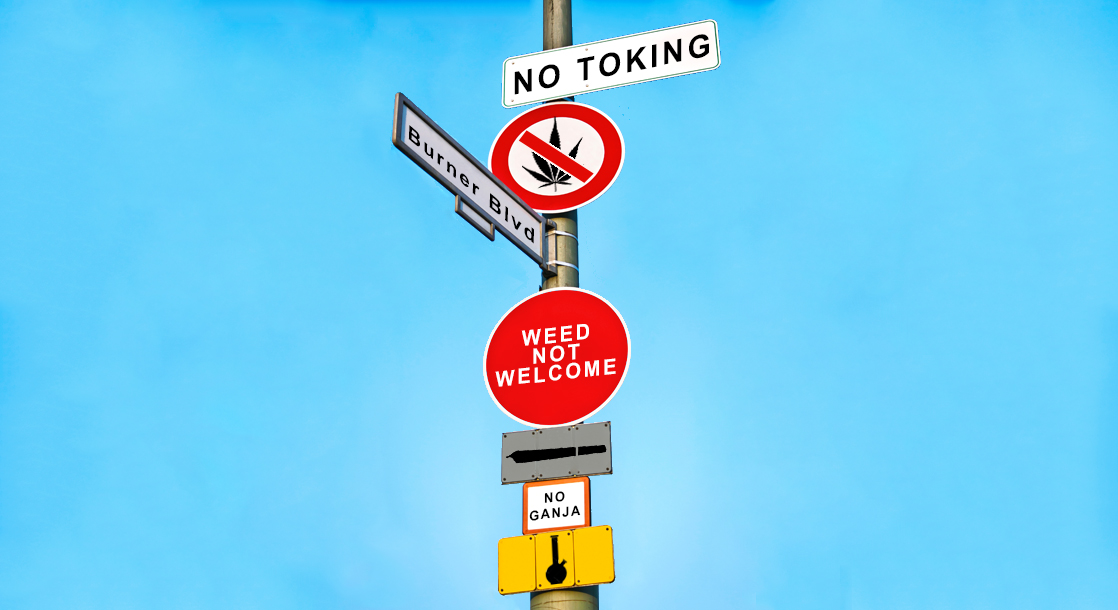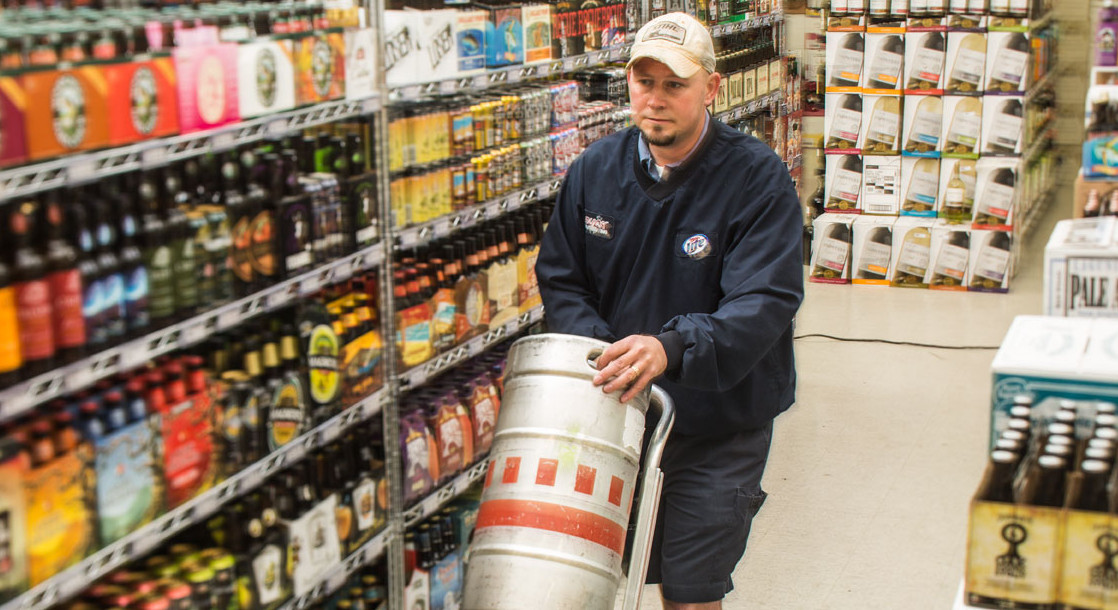Michael Ray's Calaveras County farm has been in his family for 45 years. As founder of Bloom Farms, a reputable cannabis oil company that donates a portion of its proceeds to feed the homeless, he's been cultivating cannabis there for five years. Ray's brother and sister-in-law run the farm; now they're looking for what's next.
In January, Calaveras joined the ranks of California counties like Placer, El Dorado, and others that have banned commercial cannabis cultivation and other forms of canna-business. Nevermind the hype over legalization, hundreds of growers and other cannabis industry folk will have to shut down or risk operating illegally if they can't afford to pick up and start over in a 420-friendlier jurisdiction.
Although Proposition 64 legalized cannabis throughout the state in 2016, bringing a new adult-use and medical marijuana program online last month, the measure also granted each of California's 58 counties and 482 municipalities the autonomy to essentially do as they please in deciding which (if any) canna-businesses to allow, and how strictly they’ll regulate them.
Fortunately for Ray, Calaveras isn't the only location from where Bloom Farms sources its cannabis. But shutting down the family farm is certainly "depressing," he says. "It's crazy for them to turn their backs on a burgeoning new industry that provides millions of dollars in tax revenue, thousands of jobs, and which is something that the county needs after the destruction of the Butte Fire in September 2015."
Calaveras was one of the first counties to get onboard with legalization in 2016, having seen cannabis as a means of bouncing back from the devastating wildfire. "This county was focusing on how we were going to survive the largest disaster in our history, while the rest of the state was focusing on how to deal with MAUCRSA," says Jack Garamendi, supervisor for Calaveras County's District 2. In his district alone, the fire had decimated at least 20 percent of the housing stock within four days.
While cannabis had been grown in Calaveras for decades, pot farmers swarmed the county after the fire especially, aiming to snap up cheap, burnt land. "It overwhelmed us; suddenly in a burnt down forest, you could see it was everywhere," says Garamendi. But in January, after a long struggle figuring out cannabis regulations, the county voted 3-2 to ban cultivation. Garamendi, whose district contains 75 to 50 percent of the all the grows, was on the minority side of the vote.
"This was after we took all the registration fees, after we collected tens of millions of taxes; balanced our county budget using cannabis dollars; put money into the fire department and library," he says. "And then we stopped." There were things in the urgency ordinance which laid out rules for cannabis farming in Calaveras that regulators could have done better, Garamendi surmises as to the reasoning behind the ban. For instance, there was disagreement over the size of the grows.
In other places, the move to ban has been more an issue of moral values than logistics. Placer County supervisor Kirk Uhler, for instance, views the "proliferation of marijuana, especially the ability of students to get their hands on it, as a societal ill." And as Chris Gray-Garcia, acting director of communications and public affairs for Placer County, put it, many have been worried about overall public safety and youth access.
People are passionate, and in some cases angry, on all sides of the issue. "You've got an industry [in Calaveras] that stepped out of the shadows and took the hand of the government and tried to partner with them and the government turned on them," says Garamendi. "We've had people who put their entire life savings into their farm and now we're telling them, 'you're no longer welcome here.'"
Many are hoping that once the composition of the county board changes, so too will the cannabis regulations. "If the cannabis industry can build successful social good programs, we might not have as much pushback from counties like Calaveras," Ray says optimistically. "[Bloom Farms] is celebrating one million meals donated to food banks throughout California, and I'd like to see more of that."
The jurisdictions that have gone forward with allowing commercial cannabis business have done so out of practicality — and notoriety, says Jeffrey Aubel, code compliance manager for the city of West Hollywood, proud to be one of the first cities to go forward with the legal weed regime. "We're a progressive city; we're known for that," Aubel says. "We've always been supportive of medical marijuana, so this is the next step."
The city of Oakland has also been a decades-long leader in cannabis regulation. "When moved forward regulating the full spectrum of the industry from seed to sale, in the process our elected officials began to question who benefits from the legalization of cannabis and why it's typically white males getting permits at the end of the day," says Greg Minor, assistant to the city administrator in cannabis, special permits, and nuisance abatement. Not only did Oakland opt to keep their cannabis industry above ground, but they've implemented a social equity program that aims to empower people of color in the legal industry. Cannabis is a "self-evident business opportunity," and supporting the legal market frees up law enforcement resources, Minor says.
Simply put, California jurisdictions that ban commercial cannabis business are missing out on the tax benefits of legal marijuana, while putting their residents at risk of black market ills — untested products, street dealers, and so forth.
The logic behind many bans on commercial cultivation, delivery, or retails has been "well, everyone can now grow their own, and stop worrying about patient providers," explains Debbie Tharp, legal writer at GetNugg. While Prop 64 does allow any adult over 21 to cultivate up to six plants at home (in addition to possessing up to an ounce of flower and eight grams of concentrate), it's not so easy for just anyone to grow their own weed, she says. And by forcing residents to buy from the black market, local governments relinquish their own regulatory and enforcement power, she adds.
Some of those that have gone forward with regulating cannabis have done so out of need. Jim Fitzpatrick, president of Solutioneers, a consulting agency that customizes solutions to complex cannabis regulatory issues, explains two of the main reasons California municipalities are choosing to have a permissive regulatory structure: "Either, one, the industry targeted that community for a ballot initiative, which allows you to go around city hall and directly to the people, forcing the city to act," he says, "Or two, they're cities with structural budget deficits. Mayors and council members are faced with the question, how many cops and firemen do you want us to lay off, [so] their stance on cannabis changes based on budget deficits."
Any city that can't balance its budget is a target city for coming cannabis regulation. "Doesn't matter their view on cannabis," Fitzpatrick says. "They're looking at any and all schemes to keep the municipality out of bankruptcy."
While some jurisdictions have straight up banned all forms of canna-business, others like Costa Mesa have banned only some aspects of it. "Many communities are adopting the Costa Mesa strategy, which is that they don't want the perceived or real adverse impacts of a dispensary, so they're permitting other uses," Fitzpatrick says. "Half of all cannabis is sold outside the brick and mortar dispensary. With home delivery, you're able to disperse the scale and intensity of a dispensary. You'd get regulatory and enforcement oversight and control, tax benefits, jobs, and a bigger dent in the black market."
At one time, Costa Mesa had nearly 80 dispensaries, Fitzpatrick explains. The city has since banned dispensaries, but allowed for research, testing, processing, and manufacturing in certain areas. City officials feared the intensity of the cannabis industry would be too great, since Santa Ana is the only other city in Orange County that allows for dispensaries, he says. All in all, the city thought it best to wait so they wouldn't be alone in the region, needing to manage a disproportionate demand to supply chain.
"I value the activists who have gone before and think we stand on their shoulders, but what will convince the next generation of cities to say yes is not going to be the activist protester with a bullhorn, but the more sophisticated lobbyists who are now coming in to make an economic play and articulate the benefits in how to develop a permissive regulatory scheme," Fitzpatrick says. "Now that the state has adopted Prop 64, you're seeing a lot more of the professionals get into the industry, and that's what's necessary to convince more cities of these benefits. The whole righteous patient access type things took us this far, but I don't think it will take us all the way."











